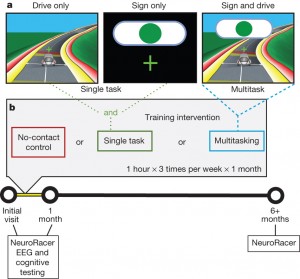Overview of the Games for Impact Space on GDC Vault
{{unknown}}
Democratization does not equate with ubiquity, but there will be enough … Continue Reading ››
 A recent study by Joaquin Anguera and the Gazzaley lab at UCSF reported that older adults who receive training on a customized driving simulator demonstrate improvements on tasks that demand divided attention. Performance benefits achieved by the simulator last for 6 months, and the resulting performance … Continue Reading ››
A recent study by Joaquin Anguera and the Gazzaley lab at UCSF reported that older adults who receive training on a customized driving simulator demonstrate improvements on tasks that demand divided attention. Performance benefits achieved by the simulator last for 6 months, and the resulting performance … Continue Reading ››
You must be logged in to post a comment.